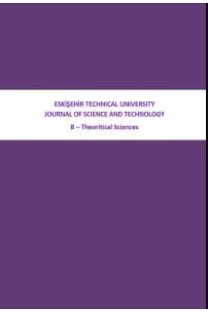A THEORETICAL APPROXIMATION FOR LAMINAR FLOW BETWEEN ECCENTRIC CYLINDERS
Taylor-Couette flow, Homotopy, Laminar flow, Navier-Stokes, Eccentric cylinders
A THEORETICAL APPROXIMATION FOR LAMINAR FLOW BETWEEN ECCENTRIC CYLINDERS
Taylor-Couette flow, Homotopy, Laminar flow, Navier-Stokes, Eccentric cylinders,
___
- [1] Fénot M, Bertin Y, Dorignac E, Lalizel G. A review of heat transfer between concentric rotating cylinders with or without axial flow. Int J Therm Sci, 2011; 50: 1138-1155. [2] Wen J, Zhang WY, Ren LZ, Bao LY, Dini D, Xi HD, Hu HB. Controlling the number of vortices and torque in Taylor-Couette flow. J Fluid Mech 2020; 901: A30.
- [3] Deutsch S, Tarbell JM, Manning KB, Rosenberg G, Fontaine AA. Experimental fluid mechanics of pulsatile artificial blood pumps. Annu Rev Fluid Mech, 2006; 38: 65-86.
- [4] Goubergrits L, Osman J, Mevert R, Kertzscher U, Pöthkow K, Hege HC. Turbulence in blood damage modeling. Int J Artif Organs, 2016; 39(4): 160-165.
- [5] Hammond TG, Hammond JM. Optimized suspension culture: The rotating-wall vessel. Am J Physiol-Renal, 2001; 281: F12-F25.
- [6] Lim DH, Lee MY, Lee HS, Kim SC. Performance evaluation of an in-wheel motor cooling system in an electric vehicle/hybrid electric vehicle. Energies, 2014; 7: 961-971.
- [7] Li H. Cooling of a permanent magnet electric motor with a centrifugal impeller. Int J Heat Mass Tran, 2010; 53: 797-810.
- [8] Abe Y, Ishii K, Isoyama T, Saito I, Inoue Y, Ono T, Nakagawa H, Nakano E, Fukazawa K, Ishihara K, Fukunaga K, Ono M, Imachi K. The helical flow pump with a hydrodynamics levitation impeller. J Artif Organs, 2012; 15: 331-340.
- [9] Mukunda PG, Shailesh RA, Kiran AS, Shrikantha SR. Experimental studies of flow patterns of different fluids in a partially filled rotating cylinder. J Appl Fluid Mech, 2009; 2(1): 39-43.
- [10] Lebiga VA, Pak AY, Zinoyev VN, Mironov DS, Medvedev AE. Simulation of Couette flow in semicircular channel. AIP Conf Proceed, 2019; 030017.
- [11] Diprima RC, Stuart JT. Flow between Eccentric Rotating Cylinders. J Lubric Tech, 1971; 72-Lub-J.
- [12] Saatdjian E, Midoux N. Flow of a Newtonian fluid between eccentric rotating cylinders. Int J Numer Meth Heat Fluid Fl, 1992; 2: 261-270.
- [13] Teleszewski TJ. Effect of viscous dissipation in Stokes flow between rotating cylinders using BEM. Int J Numer Meth Heat Fluid Fl, 2020; 30(4): 2121-2136.
- [14] Faghih MM, Sharp MK. Evaluation of energy dissipation rate as a predictor of mechanical blood damage. Artif Organs, 2018; 43: 666-676.
- [15] Mohith S, Karanth PN, Kulkarni SM. Recent trends in mechanical micropumps and their applications: A review. Mechatronics, 2019; 60: 34-55.
- [16] Dai RX, Dong Q, Szeri AZ. Flow between Eccentric Rotating Cylinders: Bifurcation and Stability. Int J Eng Sci, 1992; 30(10): 1323-1340.
- ISSN: 2667-419X
- Yayın Aralığı: Yılda 2 Sayı
- Başlangıç: 2010
- Yayıncı: Eskişehir Teknik Üniversitesi
Mehmet BAĞLAN, Ümit YILDIKO, Kenan GÖREN
STEARİK ASİT TOZUNUN OPTİK KARAKTERİZASYONU ve NANOPARÇACIKLARIN SENTEZİ İÇİN KULLANIMI
Efruz Özlem MERSİN, Mustafa BAHŞİ
A THEORETICAL APPROXIMATION FOR LAMINAR FLOW BETWEEN ECCENTRIC CYLINDERS
DENSITY FUNCTIONAL THEORY INVESTIGATION ON DRUG-DRUG INTERACTIONS: ESCITALOPRAM AND SALICYLIC ACID
Musa DABOE, Cemal PARLAK, Özgür ALVER
